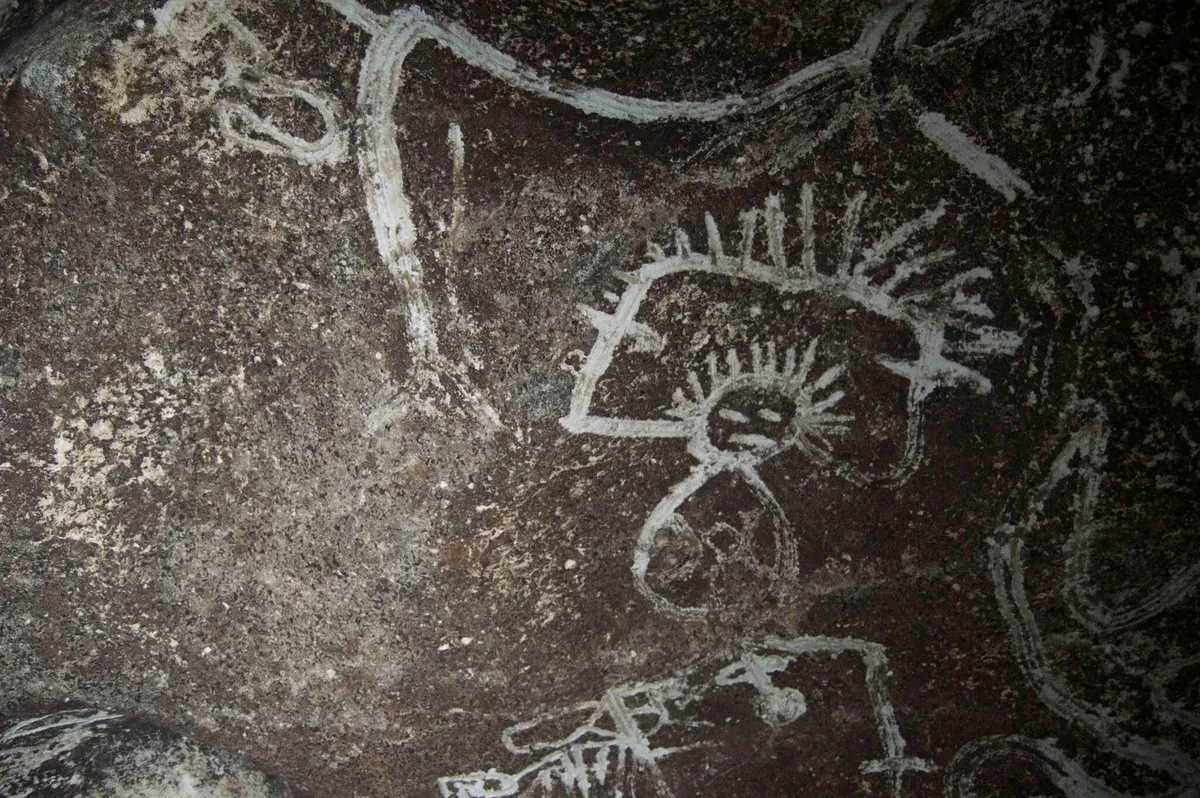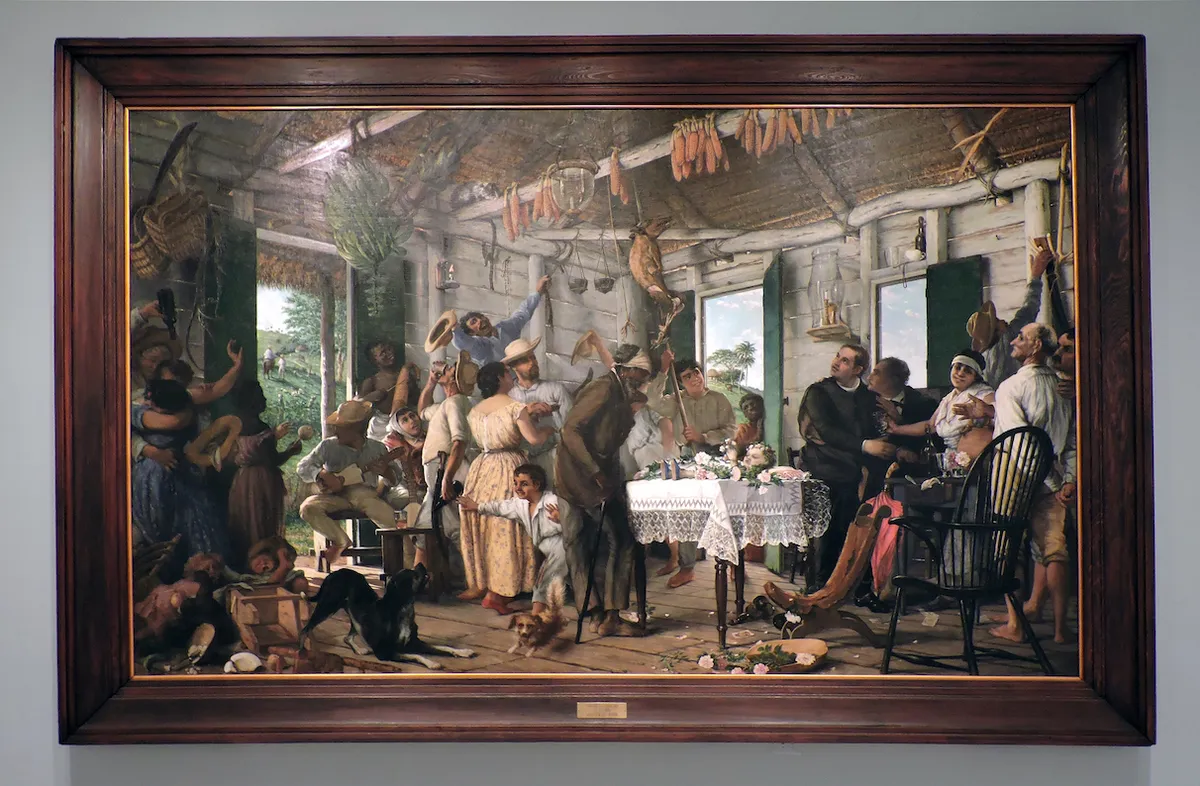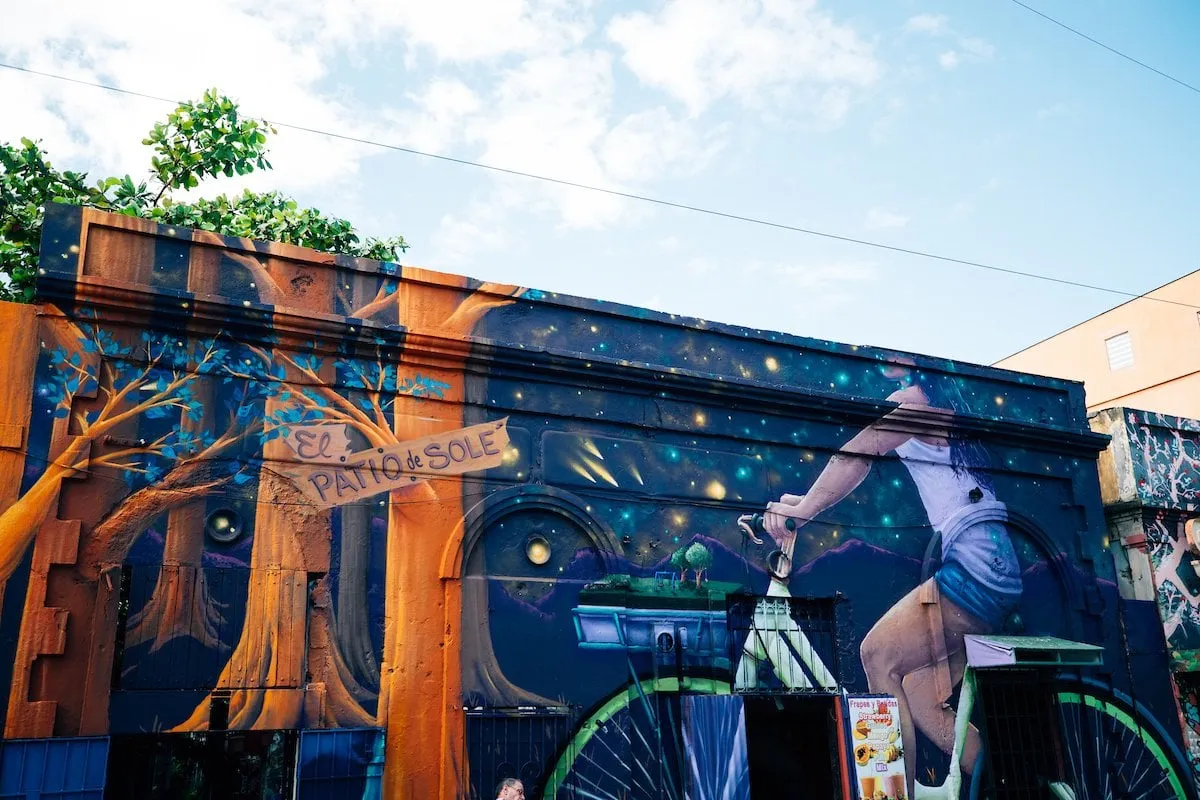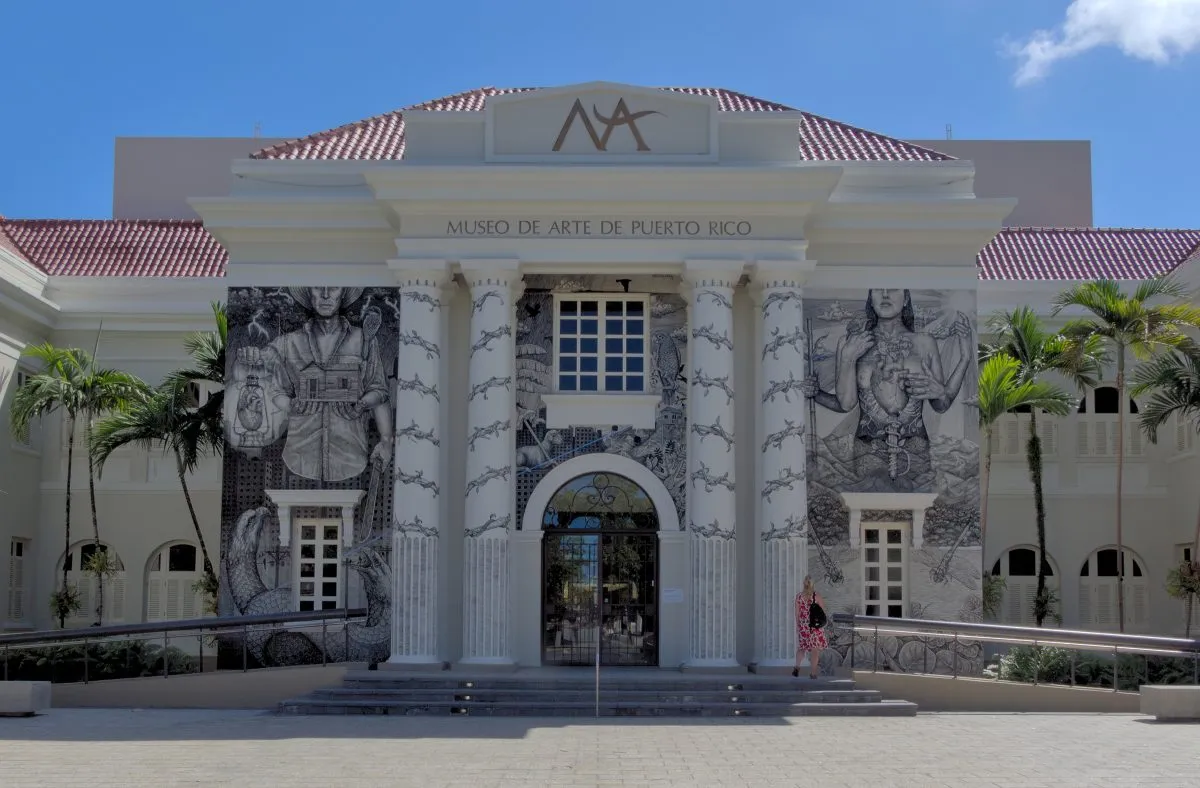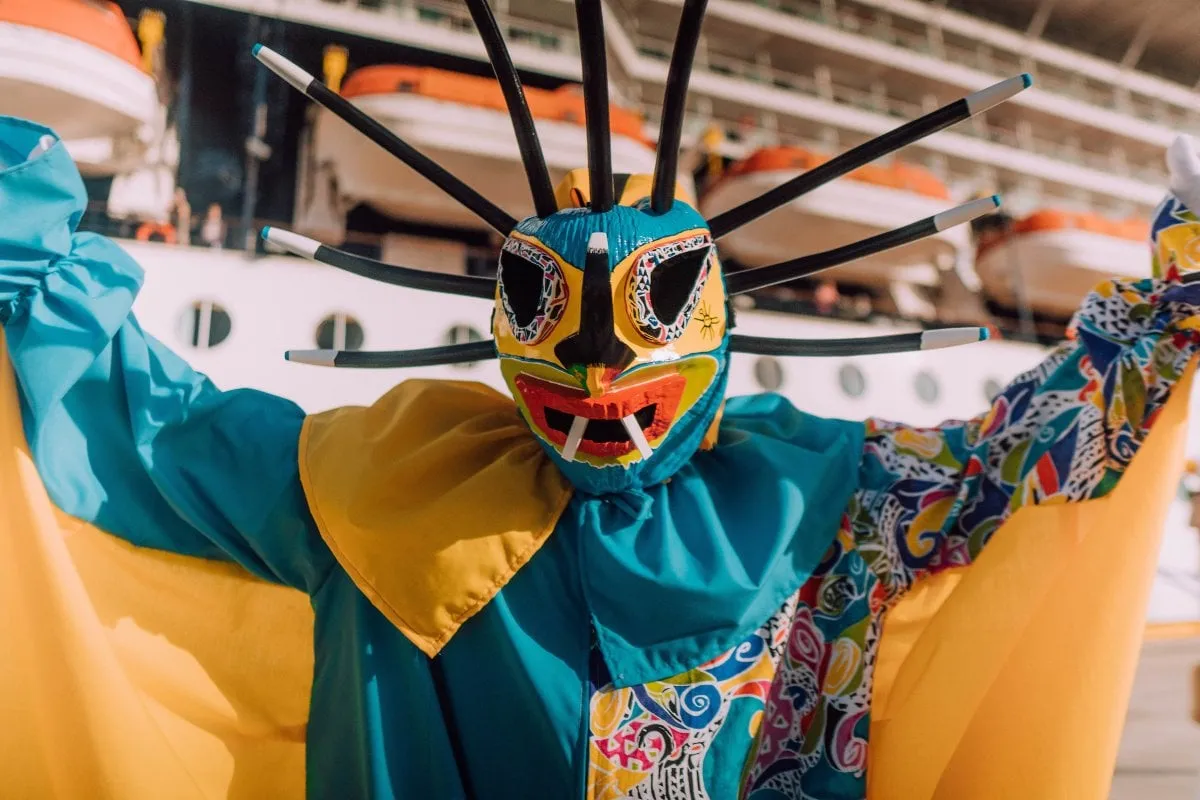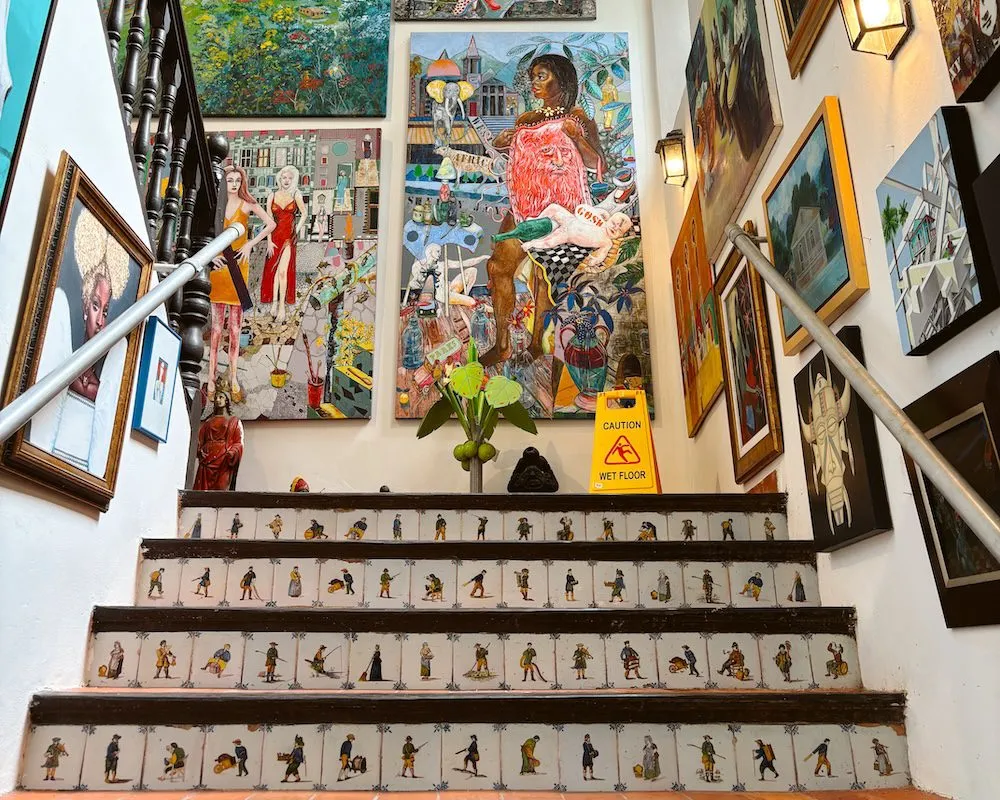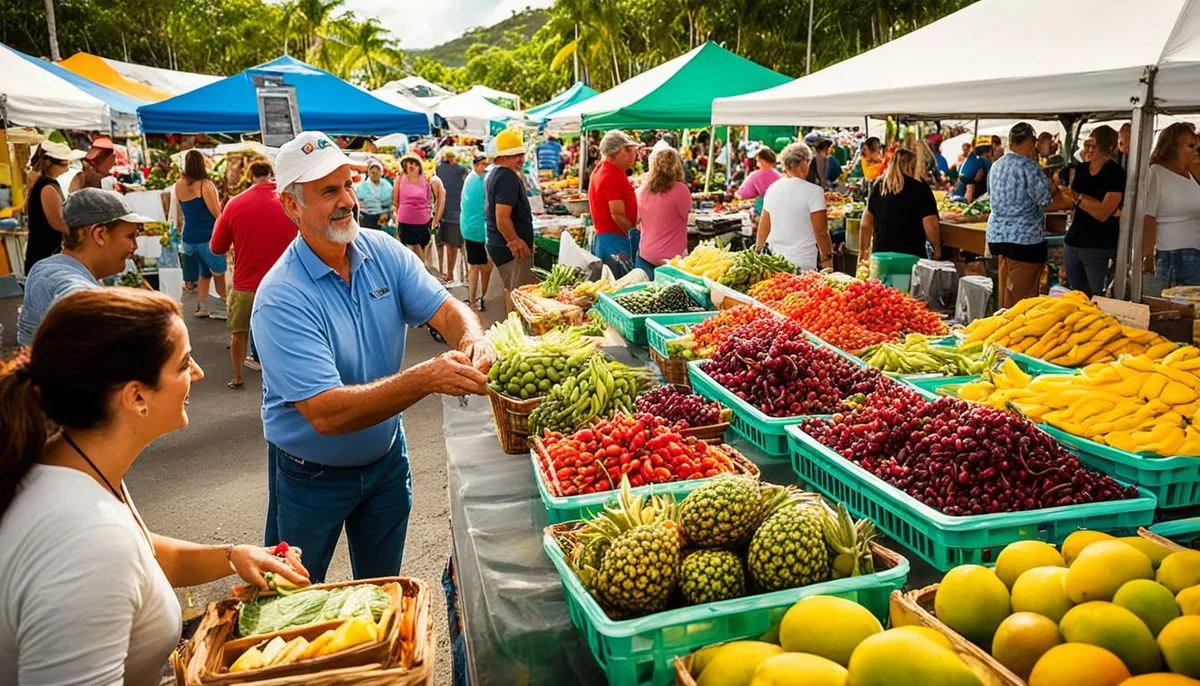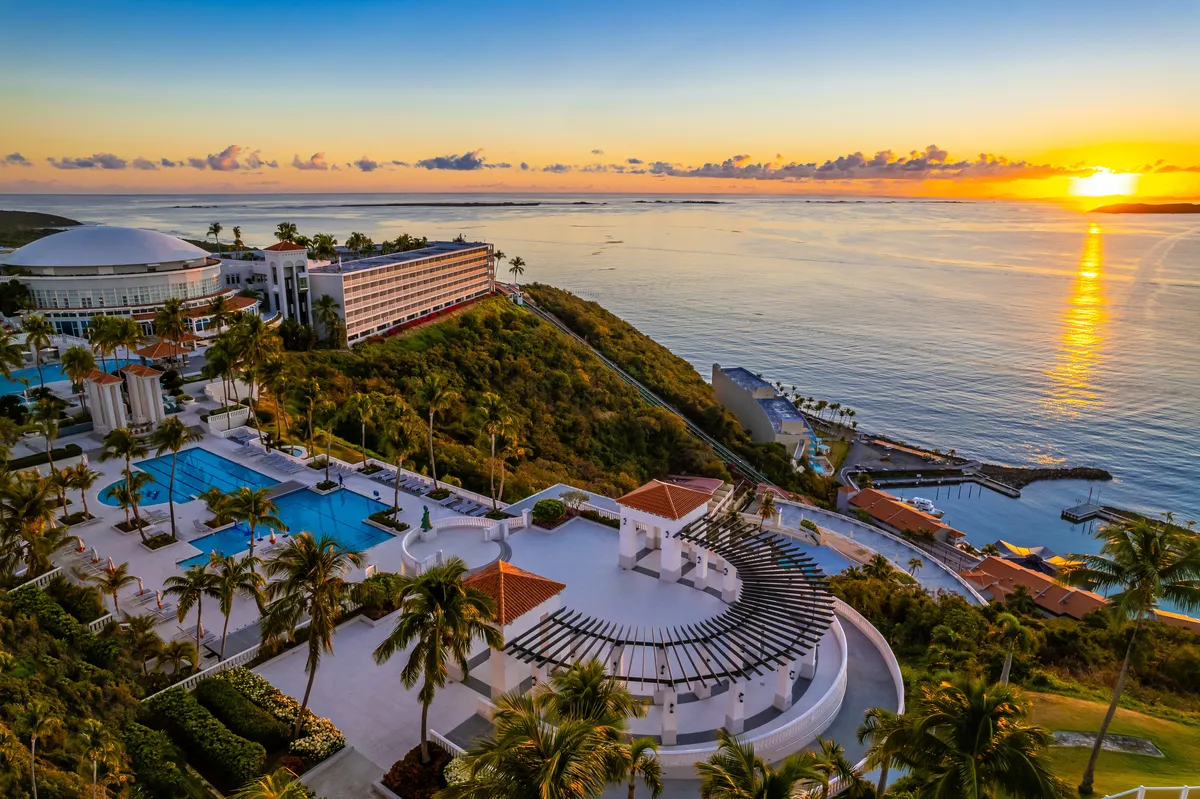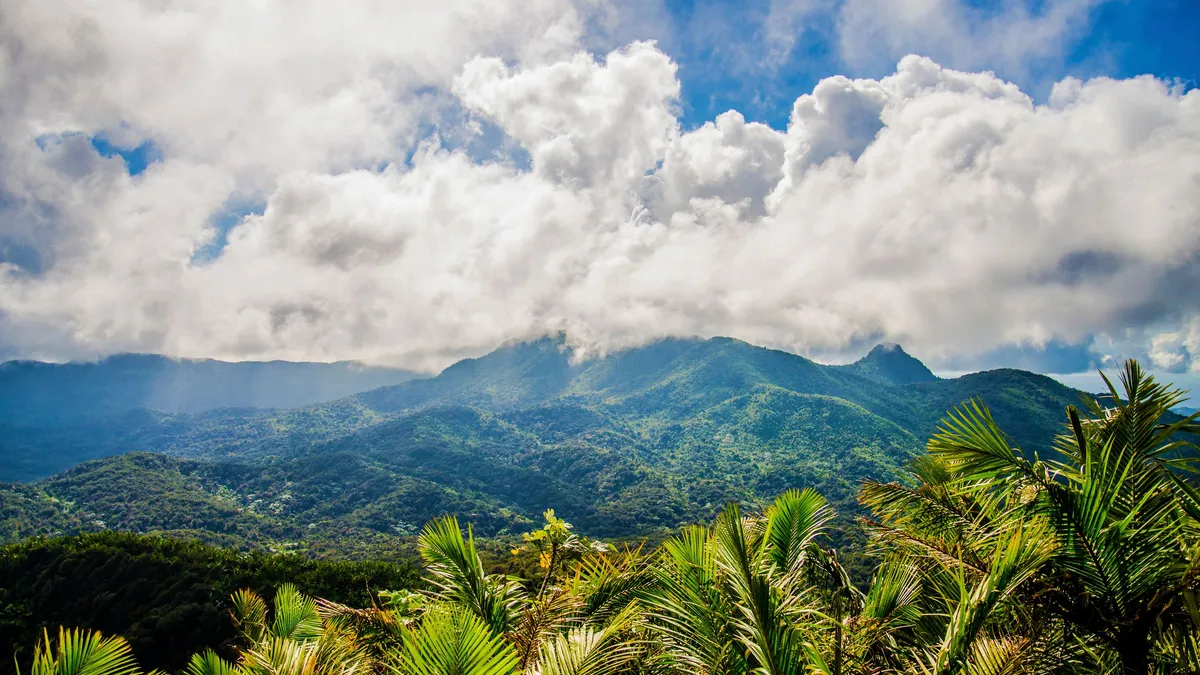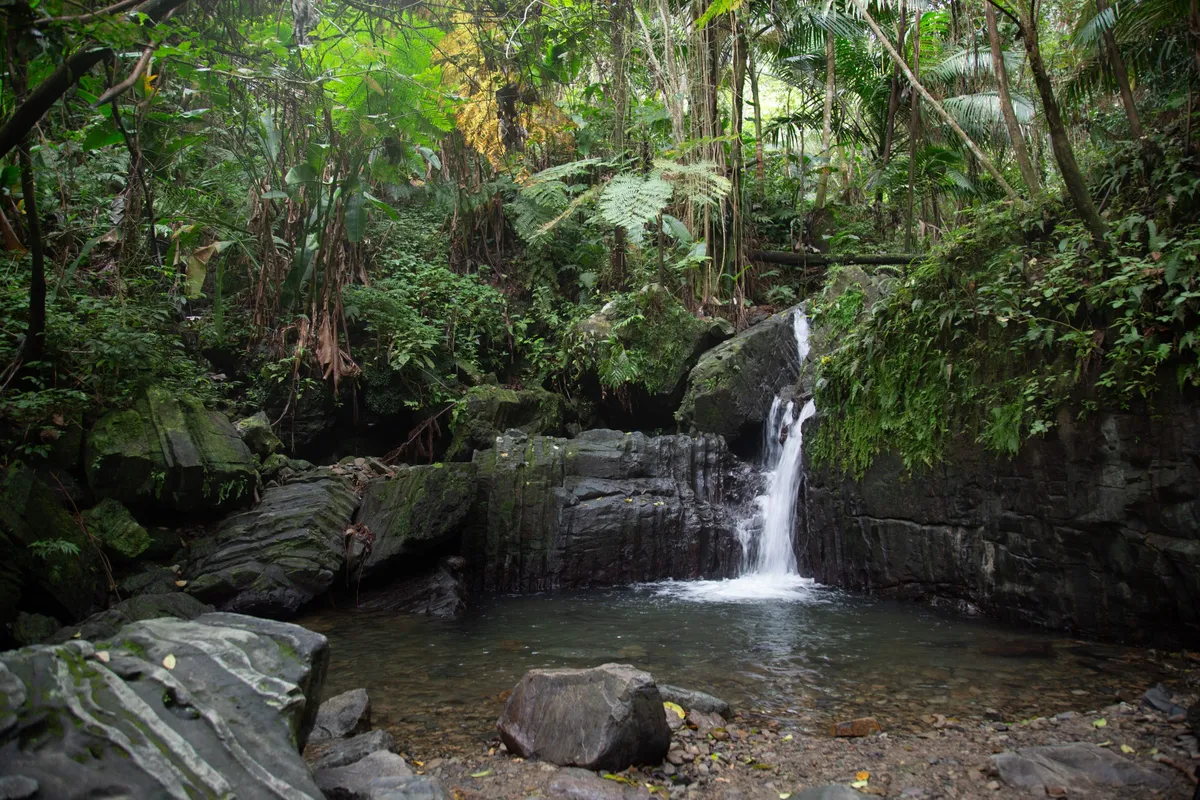After spending over a decade traveling and seeking out the cultural heartbeat of countless destinations, I can tell you that the art of Puerto Rico isn’t something you just observe in a quiet gallery. The first thing that strikes you is the thunderous color of a 50-foot mural exploding off a wall in Santurce, the centuries-old gaze of a hand-carved santo in a local artisan’s shop, and the rhythm of a culture that doesn’t just create art but lives it. From the ancient petroglyphs of the Taíno people to world-class museums and vibrant street art that has become the island’s modern voice, this guide draws from firsthand experiences walking the cobblestones of Old San Juan and the cracked pavement of Calle Cerra, speaking with gallerists, watching muralists at work, and listening to stories from fellow travelers captivated by the island’s artistic heritage. You’ll leave not only knowing where to go but understanding why this art matters so deeply to the Puerto Rican people, the Boricuas.
Understanding the Soul of Puerto Rican Art
To truly appreciate Puerto Rico art, you must first understand its soul, a concept locals call puertorriqueñidad, or “Puerto Rican-ness.” This isn’t a single, monolithic idea but a dynamic and evolving identity forged in the crucible of history. The island’s art is perhaps the most potent expression of this identity.
A Fusion of Three Worlds
Puerto Rican art is a rich, complex tapestry woven from three distinct cultural threads that form the foundational DNA of its creative expression. The first thread comes from the indigenous Taíno people, the island’s original inhabitants, whose legacy provides a deep spiritual connection to the land. Their art, seen in ancient petroglyphs and ceremonial objects, wasn’t for decoration but for function and worship—a way to commune with the natural and spiritual worlds.
The second thread is Spanish, arriving with colonizers in the 15th century. They brought European artistic techniques, particularly from the Baroque and Rococo periods, and the powerful iconography of the Catholic church. This influence is most visible in the island’s early masters and the enduring tradition of religious carving.
The third and equally vital thread is African. Enslaved Africans, brought to the island against their will, carried with them resilient spiritual traditions, a profound sense of rhythm, and an aesthetic sensibility that infused the culture with vibrant color and expressive energy. This heritage is powerfully felt in the island’s music, dance, festivals, and folk art, particularly in the creation of festival masks and crafts in towns like Loíza.
Art as Resistance and Voice
In Puerto Rico, art has rarely been a passive pursuit. For centuries, it has served as a powerful vehicle for social and political commentary, a public forum for a people navigating a complex history. Puerto Rican artists have consistently used their work to grapple with the legacy of colonialism, first under Spain and then under the United States. Their canvases and prints have become platforms to address social injustice, protest political strife, and explore the island’s ambiguous political status. This is especially true in the street art of San Juan, where murals act as public editorials, commenting on everything from government corruption and the post-Hurricane María recovery to the preservation of local culture against the tide of gentrification. The art isn’t merely decorative—it’s a form of resistance, a way of speaking truth to power when other avenues are closed.
The History of Art in Puerto Rico: From Taíno to Today
The story of Puerto Rico art is a captivating journey that begins with ancient symbols carved in stone and leads to the bold, politically charged prints of the 20th century. Understanding this evolution provides crucial context for everything you’ll see today.
The First Strokes: The Legacy of Taíno Art
Long before European arrival, the Taíno people populated the island they called Borikén. Their art was deeply intertwined with spiritual beliefs and daily life. The most enduring examples are petroglyphs, mysterious symbols and figures carved into rocks near rivers and caves, with some estimates dating their creation as far back as 5000 BCE.
Central to their cosmology were cemís, sculptural representations of gods, spirits, or ancestors that served as vessels of spiritual power, typically carved from wood, bone, or stone. They often feature broad, open mouths and large, circular eyes, emphasizing the head as the location of spiritual force. Another significant artifact is the duho, a ceremonial seat intricately carved from wood and used by chieftains and shamans during rituals. While the Taíno population was decimated by Spanish colonization, their legacy lives on—recent genetic studies confirm that over 60% of modern Puerto Ricans carry Taíno ancestry, making this indigenous heritage a living component of the island’s identity today.
The Colonial Canvas: Spanish Influence and Early Masters
The arrival of the Spanish dramatically shifted the island’s artistic trajectory. Art became a primary tool for the Catholic Church to convert the indigenous population, leading to the creation of religious icons. This period gave rise to one of Puerto Rico’s most cherished folk art traditions: the carving of santos de palo, or wooden saints, which allowed families in remote rural areas to maintain their faith.
This era also produced the island’s first internationally recognized masters. José Campeche (1751–1809) is widely regarded as Puerto Rico’s first great painter, a master of the Rococo style renowned for his elegant religious paintings and insightful portraits of the island’s elite. Francisco Oller (1833–1917) was a true pioneer who traveled to Europe and worked alongside Gustave Courbet and Camille Pissarro, becoming the only Latin American artist to play a significant role in the development of the Impressionist movement. Upon returning to Puerto Rico, he dedicated himself to capturing the reality of his homeland, from lush landscapes and stunning still lifes featuring native fruits like the mamey to profound social commentaries. His masterpiece, El Velorio (The Wake), is a monumental work of realism that unflinchingly depicts the grief of a rural family and remains a cornerstone of Puerto Rican art history.
The People’s Voice: The 20th-Century Printmaking Revolution
The 20th century ushered in a modern art movement where artists began to more explicitly tackle social and political themes, reflecting the island’s search for identity under U.S. rule. A key catalyst was the División de Educación de la Comunidad (DIVEDCO), a government agency established in 1949 that used art as a tool for public education in rural areas on topics like literacy, health, and civic engagement.
This initiative had a profound and lasting impact on Puerto Rico art. Before DIVEDCO, fine art was largely the domain of the elite, but this program democratized it, making art a shared public experience through widely distributed silk-screen posters and films. The program nurtured the “Generation of the ’50s,” artists who developed a powerful visual language characterized by bold graphics, social realist themes, and celebration of the jíbaro (rural farmer) as a national symbol.
Two masters of printmaking emerged from this movement. Lorenzo Homar (1913–2004), a master printmaker and designer, was instrumental in establishing the Graphic Arts Workshop of the Puerto Rican Institute of Culture, and his work is celebrated for its technical brilliance and powerful use of typography and imagery to promote cultural pride. Rafael Tufiño (1922–2008), known as the “Painter of the People,” celebrated the everyday life and traditions of Puerto Rico through prints and paintings like his iconic portrait of his mother, Goyita, capturing the dignity and strength of the working class and helping solidify a collective cultural identity.
The Living Gallery: Exploring the Santurce Street Art Scene
While Puerto Rico’s museums house priceless historical works, some of its most dynamic and urgent art is found on the streets. The island, particularly San Juan, has become a global destination for street art, transforming urban landscapes into vast, open-air galleries that are free for all to experience.
Santurce: The Heartbeat of Caribbean Street Art
The epicenter of this movement is the San Juan neighborhood of Santurce. Once a neglected area, it has been revitalized over the past two decades by an explosion of creative energy, making it one of the largest and most important art districts in the Caribbean. To walk through Santurce is to be immersed in a world of color and commentary, where murals towering 50 feet high cover entire building facades, telling stories of cultural pride, social struggle, and environmental consciousness.
You can easily spend a full afternoon exploring the art on your own. Start at Calle Cerra, the undisputed ground zero of the Santurce street art scene, which boasts the highest concentration of large-scale, breathtaking murals and is where the annual Santurce Es Ley festival was born. Wander down its length and explore adjacent side streets for surprising finds. Then continue to Calle Loíza, known as San Juan’s “Avenue of the Arts,” where murals are integrated into a lively landscape of trendy cafes, independent boutiques, and innovative restaurants, creating a perfect fusion of art and commerce.
The Santurce art scene is in constant flux, a testament to its vitality. This is largely driven by two major annual festivals: Santurce Es Ley, founded by local artist and curator Alexis Busquet, and Los Muros Hablan (“The Walls Speak”). These events invite curated rosters of both local and international artists to create new works, often painting directly over older, faded pieces, ensuring that the neighborhood’s visual landscape is always evolving.
Is a Guided Tour Worth It?
One of the most common questions from visitors is whether to explore Santurce independently or book a guided tour. Having sifted through countless reviews and spoken with fellow travelers, the consensus is clear: both have their merits but offer different experiences.
Many who opt for a guided tour find the experience incredibly enriching. As one traveler shared, “Our guide did a fantastic job sharing the stories behind the murals, making the walk both fun and educational. One highlight was the stunning 3D mural—absolutely mind-blowing!” A tour provides invaluable context, explaining the social and political messages that an outside observer might miss.
Conversely, exploring on your own offers a sense of discovery and freedom. Another visitor noted, “We didn’t do a formal art walk per se but chose to walk around Santurce streets. The murals are impressive and the artists super talented. People in cars were so friendly, letting us cross freely through the streets.” This approach allows you to move at your own pace and let your curiosity guide you.
My recommendation? For your first visit, take a guided tour. The stories behind the art—which tackle everything from climate change and the journey of enslaved Africans to the defunding of local arts programs—are what give these murals their profound power. Companies like The Art Walk PR and other locally-run cultural tours offer fantastic, insightful experiences. On your second visit, wander freely and allow yourself to get lost in the vibrant labyrinth of art.
Insider’s Guide to Santurce: Safety, Food, and Vibe
For first-time visitors, Santurce can seem like an eclectic mix of gentrified cool and urban grit. The neighborhood is generally safe to explore during the day, especially along the main art-filled thoroughfares like Calle Cerra and Calle Loíza. However, it’s a diverse urban neighborhood with both beautifully restored buildings and some that remain dilapidated. As you would in any major city, stay aware of your surroundings, particularly if you venture onto quieter side streets.
An afternoon of art exploration will surely work up an appetite, and Santurce is home to some of San Juan’s most exciting culinary spots. El Patio De Solé offers a truly authentic experience at this family restaurant located inside the owner’s family home, known for its traditional Puerto Rican dishes and charming character. Kudough’s Donuts has some of the most creative and delicious donuts on the island, perfect for a sweet pick-me-up. Lote 23, a famous open-air food truck park, is a must-visit with a wide array of options from traditional Puerto Rican food to poke bowls, offering a relaxed, communal vibe and often featuring live music in the evenings.
Beyond San Juan: Discovering Murals Across the Island
While Santurce is the undisputed capital of Puerto Rican street art, the movement has spread across the entire island. In the south, the city of Ponce, known as the “Pearl of the South,” has a burgeoning urban art scene of its own, with large-scale murals adding a modern touch to its historic architecture. As you travel through Puerto Rico, keep your eyes open—you’re likely to stumble upon vibrant murals on bridges, buildings, and public spaces in the most unexpected towns.
Puerto Rico’s Best Art Museums and Galleries
Beyond the dynamic energy of the streets, Puerto Rico’s formal art institutions offer world-class collections that provide a deep and essential understanding of the island’s artistic heritage. For any art lover, these art museums in San Juan and beyond are not just recommended—they’re required viewing.
Museo de Arte de Puerto Rico (MAPR), Santurce
This is the island’s definitive fine arts institution and the largest in the Caribbean. Housed in a magnificent neoclassical building that was once a hospital, the museum’s 24 galleries showcase a comprehensive collection of Puerto Rico art from the 17th century to the present day. You’ll find masterpieces by historical figures like José Campeche and Francisco Oller alongside works by contemporary giants. Don’t miss the stunningly beautiful and peaceful sculpture garden tucked away behind the main building—it’s an oasis in the city.
The museum is open Wednesday, Friday, and Saturday from 10am to 5pm, Thursday from 10am to 8pm, and Sunday from 11am to 5pm. General admission is $15, with reduced rates for residents at $12. Here’s an insider tip: go on a Thursday afternoon, explore the main collection, then enjoy the free evening hours from 5pm to 8pm and grab dinner in Santurce afterward. The sculpture garden is one of the most peaceful spots in San Juan and shouldn’t be skipped.
Museo de Arte Contemporáneo (MAC), Santurce
Housed in the historic, Georgian-style Rafael M. Labra schoolhouse, the MAC offers a more focused experience dedicated to art from the mid-20th century to today. It is the only institution on the island expressly dedicated to contemporary art from Puerto Rico, the Caribbean, Latin America, and their diasporas. The museum champions emerging artists and fosters constant dialogue about contemporary issues through innovative exhibitions, often spread throughout the building’s former classrooms.
Open Wednesday through Sunday from 11am to 5pm, general admission is $8, with reduced rates for residents at $6 and students at $3. The building itself is part of the experience—the intimate scale of the former classrooms creates a unique and personal connection with the art. Check their schedule for artist talks or workshops.
Museo de Arte de Ponce
Located in the southern city of Ponce, this museum is a cultural treasure of international renown. Founded by philanthropist and former governor Luis A. Ferré, the Museo de Arte de Ponce is celebrated for its extraordinary collection of European art, considered one of the most important in the Americas. Its holdings are particularly strong in Baroque and Victorian paintings, and it houses one of the most significant Pre-Raphaelite collections in the Western Hemisphere. The museum’s undisputed masterpiece is “Flaming June,” the magnificent 1895 painting by Lord Frederic Leighton, which has become an icon of the institution.
Important note: The museum has been undergoing extensive reconstruction work following earthquake damage and currently operates under temporary hours, typically Friday and the last Saturday of the month. Since access is limited, plan your trip to Ponce around the museum’s specific open days and book your ticket and guided tour online in advance to guarantee entry. Check the official website for the most current information before planning a visit.
Museo de las Américas, Old San Juan
This museum focuses on the art and anthropology of the Americas, from indigenous cultures to the present, and is located in the historic Cuartel de Ballajá barracks. Open Tuesday through Friday from 9am to 4pm and Saturday through Sunday from 11am to 5pm, general admission is $6, with reduced rates for students and seniors at $4. The dramatic interior courtyard of the Ballajá barracks is one of the most photogenic spots in Old San Juan, and the museum provides excellent context for the island’s blended cultural heritage.
The Gallery Scene: Where to Find Contemporary Art
For those looking to see the latest from the contemporary scene or perhaps purchase a piece to take home, San Juan’s gallery circuit is vibrant and accessible. Galería Botello in Old San Juan is a true institution, located in a stunning 350-year-old colonial mansion, showcasing a mix of fine international and local contemporary artists and also known for its exceptional collection of antique, hand-carved santos.
Walter Otero Contemporary Art (WOCA) in Puerta de Tierra, situated between Old San Juan and Condado, is a dynamic, multi-level space that aims to break the traditional gallery model. With exhibitions spread across three floors and a rooftop garden featuring outdoor sculptures with views of San Juan Bay, it’s an experience in itself. Other notable art galleries in Puerto Rico include Pamil Fine Art Gallery, which represents both established and emerging artists from Puerto Rico and Latin America; Biaggi-Faure Fine Art, with its deep focus on Puerto Rican artists; and The Art House PR, which presents a new exhibition of Caribbean artists each month.
Bringing Home a Piece of Puerto Rico: Folk Art and Crafts
One of the most rewarding ways to connect with Puerto Rican culture is through its rich tradition of folk art and handicrafts. These aren’t just souvenirs—they’re tangible pieces of the island’s history and identity, lovingly crafted by artisans who are keeping centuries-old traditions alive.
Traditional Folk Art: Vejigante Masks and Santos de Palo
Two forms of folk art stand out as quintessentially Puerto Rican, each with fascinating history and distinct regional variations. Vejigante masks are vibrant, often fearsome masks that symbolize Puerto Rican carnival. The vejigante is a folkloric demon-like character who appears in festivals, playfully swatting at onlookers with an inflated cow bladder. The tradition originated in medieval Spain but was transformed in Puerto Rico by African and Taíno influences into something uniquely Boricua.
There are two primary styles to look for. The Loíza style reflects the town’s deep Afro-Puerto Rican heritage, with masks traditionally carved from dried coconut shells, featuring dramatic carved features like multiple horns, pronounced snouts, and bared teeth—powerful symbols of cultural resistance and pride. The Ponce style uses papier-mâché, allowing for more elaborate and fantastical designs, often with a multitude of horns and a more whimsical, though still menacing, appearance.
Santos de palo, or wooden saints, have roots dating back to the 17th century. In an era when many rural communities were isolated and far from the nearest church, these figures became central to domestic religious practice. Local artisans, known as santeros, would carve the figures from native woods like cedar, creating intermediaries for protection and prayer. Over time, the style evolved from the ornate, realistic Spanish Baroque tradition to a more distinctly Puerto Rican aesthetic, characterized by simpler forms, childlike features, and a profound sense of gentle humanity. Today, santos are considered a national symbol and treasured art form.
Where to Find Authentic Art
Finding authentic, handmade art is a highlight of any trip to Puerto Rico. For a fantastic one-stop shopping experience in Old San Juan, head to the Artisan Market at Paseo de La Princesa, which takes place every weekend. You’ll find a wide array of local artisans selling everything from jewelry and ceramics to wood carvings and traditional sweets. For a curated gallery experience, visit Puerto Rican Art & Crafts on Calle Fortaleza, located in a restored colonial building.
The island’s many festivals are prime opportunities to meet artists and buy their work directly. The massive Fiestas de la Calle San Sebastián in Old San Juan every January is the largest, with hundreds of artisans setting up stalls. Another wonderful event is La Campechada, a unique festival that changes location each year and celebrates the life and work of a different master Puerto Rican artist with live music, theater, and a huge art fair.
For a truly memorable souvenir, why not make your own? A growing number of workshops in San Juan cater to travelers, offering hands-on classes where you can learn to make your own perfume, craft a pair of traditional espadrilles, or participate in a beachside painting class. These experiences offer a fun, creative way to engage with local culture.
Buying Local Art Ethically
When you purchase art from a local creator, you’re not just buying an object—you’re supporting a culture and an individual’s livelihood. To ensure your purchase has a positive impact, ask questions and engage with the seller, whether it’s the artist themselves or a gallery owner. Ask who the artist is, where they’re from, and how they get paid for the sale. Reputable sellers will be happy to share this information.
The best way to ensure the artist receives maximum benefit is to buy directly from them at a festival or market. If you’re buying from a gallery, choose one that is transparent about its relationships with the artists it represents. While haggling may be common in other markets, it’s generally discouraged when buying handmade art in Puerto Rico. The price reflects the artist’s time, skill, materials, and unique cultural knowledge, and aggressive haggling can devalue their work and directly impact their ability to make a living. For more significant purchases, it’s reasonable to ask for a certificate of authenticity or some form of documentation to help verify the work’s legitimacy.
Plan Your Art-Immersive Trip to Puerto Rico
With a deeper understanding of Puerto Rico art, you can craft a travel experience that goes beyond the beaches and into the cultural heart of the island. Here’s a sample itinerary designed for maximum art immersion, balancing museums, street art, and hands-on experiences.
An Art Lover’s 3-Day San Juan Itinerary
Day 1: Historic Immersion in Old San Juan. Start your morning at the Museo de las Américas in the Cuartel de Ballajá to get a foundational understanding of the island’s blended heritage. In the afternoon, wander the blue cobblestone streets and explore contemporary galleries, making sure to stop at Galería Botello to see its unique mix of art and antique santos. If it’s a weekend, stroll down to the Paseo de la Princesa in the evening to browse the artisan market as the sun sets.
Day 2: Contemporary Deep Dive in Santurce. Begin your morning at the Museo de Arte de Puerto Rico (MAPR) and spend at least two hours exploring the main collection before taking a peaceful walk through the sculpture garden. In the afternoon, walk over to the Museo de Arte Contemporáneo (MAC) for a different perspective, then embark on your own street art tour, focusing on Calle Cerra and surrounding blocks. In the evening, soak in the local vibe and grab dinner from the diverse offerings at the Lote 23 food truck park.
Day 3: Afro-Caribbean Roots and Artisan Shopping. Take a morning and afternoon day trip to the nearby town of Loíza, a hub of Afro-Puerto Rican culture, where you can gain a deeper appreciation for the roots of bomba music and see where the iconic coconut vejigante masks are made. A visit to the studio of renowned local artist Samuel Lind is a powerful experience that many cultural tours offer. Return to San Juan in the evening for any last-minute souvenir shopping in Old San Juan or Condado before a farewell dinner.
In Puerto Rico, art is more than an object to be admired in a museum—it’s an active, essential, and ever-present force in the life of the island. From the pride of a festival mask to the gentle face of a carved santo, from the defiant color splashed across a city wall chronicling devastation and hope to the masterpieces housed in world-class institutions, Puerto Rico art serves as the visual record of a complex history, a vibrant expression of a resilient identity, and a defiant look toward the future. To visit Puerto Rico without engaging with its art is to see the island in black and white. So go wander the streets, step into the galleries, talk to the artists, and let the vibrant, complex, and beautiful soul of Borikén color your journey in ways you never expected.
Read more:
